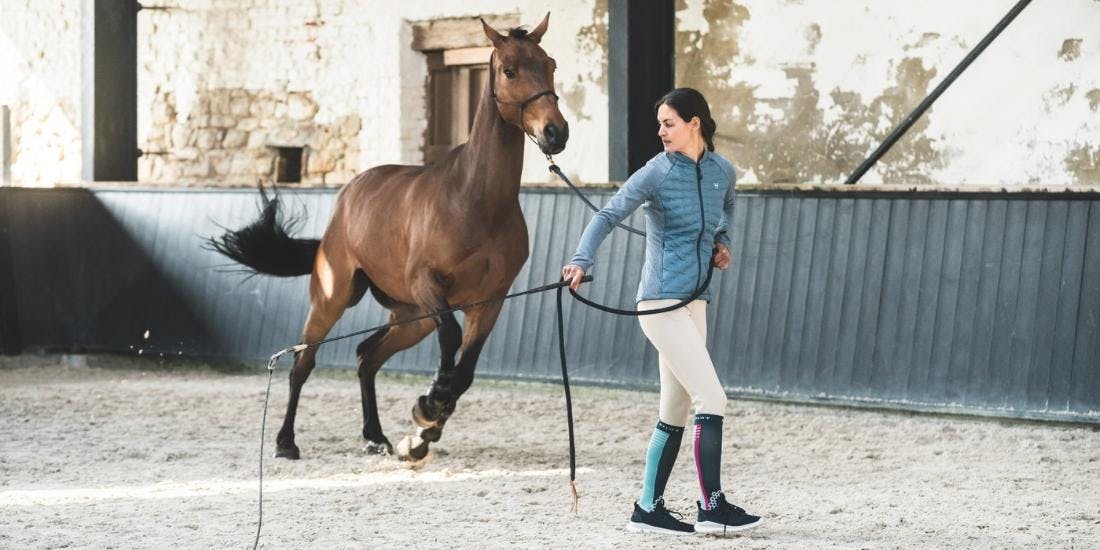Practicing horse riding, the sport with multiple disciplines

Riding is an exciting sport practiced in harmony with the horse. Practiced as a leisure activity, a sport or a true art, it encompasses a great many equestrian disciplines and has existed for many centuries. Endurance, trekking, voltige, polo, without forgetting the three Olympic disciplines: dressage, show jumping, and eventing (CCE). In addition, the so-called "foot riding" has developed enormously. It is practiced without how to ride a horse, through footwork and ethology. Indeed, the relationship of respect and trust between a horse and its rider is very important. Finally, horseback riding is an opportunity to compose a personalized style with the multitude of existing boots, pants and other clothing.
The benefits of horseback riding
While horseback riding is primarily a sport, it is also considered a way of life (especially for owner riders). It provides many benefits to riders, whether physical or on the morale. Indeed, this activity is usually practiced in the open air or in a riding school and in the greatest respect for nature and the horse.
The physical benefits of horseback riding
Riding is a gentle sport practice. It promotes muscle development in adults, but also awakens the youngest. It improves muscle tone, balance and allows the body to gain longevity.
The benefits of horseback riding on morale
Riding is practiced in harmony with the horse: it allows you to take time for yourself and live in the moment. It strengthens self-assurance and self-confidence, allowing riders to maintain a complicity with their mount. Riding can be practiced alone with a horse or with others. Whether in a riding club or an owner's stable, riding with friends or family creates good times and lasting memories. In cold weather in the riding arena or out in the arena, it always creates good memories.
The values of horseback riding
Riding is also the ideal sport to teach a child essential values such as respect for others, for the animal, for an instruction and for safety rules. The youngest learn to be persevering, attentive, patient and respectful. Riders with more experience also benefit from the values conveyed by horseback riding, especially in competition: respect for adversity, failure or success, and fair play.
Disciplines in horseback riding
In France, there are more than 30 equestrian disciplines. Among them, there are the best known such as show jumping, dressage, cross-country, working on foot or hunter. But there are also other equestrian disciplines that are a little less widespread, such as equifeel, mountain trail, voltige, carriage driving, or trec. There are generally two main types of riding: classical riding and western riding. The first is the most widespread, although the second tends to become more and more democratized.
The passage of the gallops
The different levels of knowledge of riders are called "galops". They gather theoretical knowledge as well as practical skills. During the vacations, improvement courses are generally offered by the equestrian centers for the passage of riding level. Beginners as well as experienced riders are welcomed to these courses where each stable offers lessons and courses, rides, pony rides, group lessons, etc.

What equipment for horseback riding?
The practice of horseback riding requires equipment, both for the rider and the horse. These equipement equitation have several functions: first and foremost, that of protecting the rider as well as the horse. They also bring more comfort to the riding, as for example the saddle. Finally, the equipment can have an aesthetic function appreciated by the rider, particularly via the clothing (pants, jacket, boots, etc.).
Riding equipment for the horse
First of all, it is necessary to take care of his horse. To do this, you need to arm yourself with a halter and grooming equipment (brushes, hoof picks, sponge, etc.). Then comes the equipment needed for riding: saddle, snaffle or bridle, rug and shock absorber (be careful with the latter to put it only if the horse really needs it).
Riding equipment for the rider
In France, wearing a helmet or a bomb is mandatory. This protects the rider's head in case of a fall. For more comfort, it is also advisable to wear suitable clothing: riding pants or breeches, boots and gloves. This prevents the rider from suffering from chafing in clothes unsuitable for riding. Finally, it is possible to opt for additional tools such as a riding crop, spurs or special reins such as German reins or pessoa. Be careful, however, with this last point: these accessories are to be used sparingly and always with respect for the horse.
Riding in competition
Handicapped Riding
Equestrianism is a sport that can be practiced by most disabled people. In competition or leisure, it may require special accommodations. The federal commission sometimes offers support in choosing the host structure, the horse and the equipment. This equestrian discipline can only be practiced in establishments that are affiliated with the FFE (Fédération Française d'Equitation), some of which have opened a section reserved for handisports. The disciplines that can be practiced in competition or leisure include show jumping, dressage, or driving.
Specific equipment for handisport riding
For riders with motor disabilities, there are many options for adapting conventional riding gear. For example, it is possible to find saddles equipped with a wedging system that allows the legs to be held in place, while still allowing them to be free. It is also possible to find safety handles on saddles to allow the rider to hold on. In addition, there are adaptations of the reins to make them easier to hold. Finally, special ramps or mounts can help some riders get on their horse more easily.